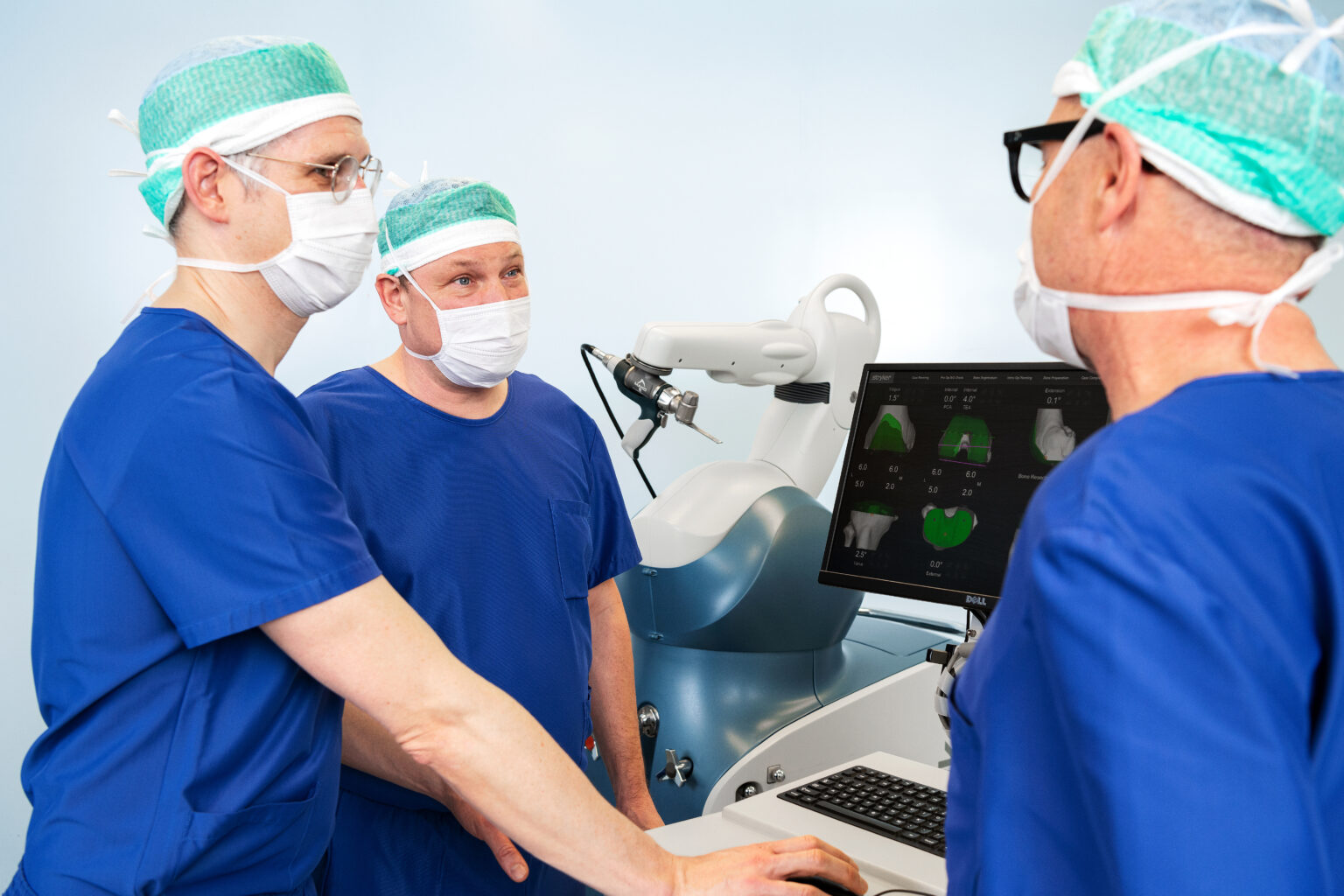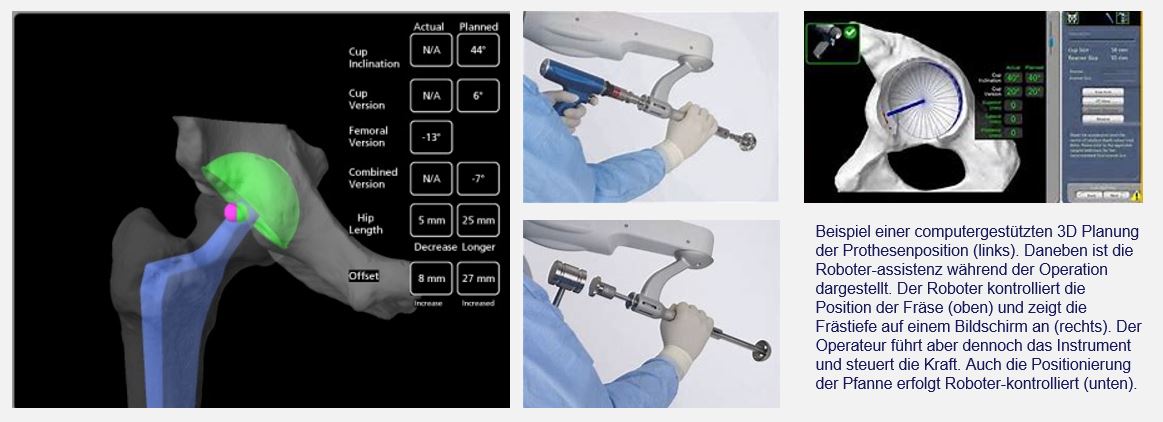
We have been using computer-assisted procedures to position the implants and reconstruct the exact length of the leg for our hip prostheses
for years.
Our articon practice is one of the pioneers of computer-assisted and robot-assisted surgery in Europe.
Since 2005, computer-navigated hip prostheses have been implanted as standard at articon. This was introduced together with a minimally invasive antero-lateral approach, as the computer assistance ensures the precision of the implant position despite reduced visibility of the wound area. We have now performed over 1500 hip replacements using this technique
From 2019, we gradually began implanting hip prostheses using robot-assisted technology. This has practically become our standard procedure since 2022. By using MAKO robotic technology, we are even more precise in the positioning of the acetabulum. This reduces complications and also the closure of the hip prostheses thanks to the biomechanically optimal alignment of the implant. In combination with the short stem prosthesis on the femur, we can operate even more anatomically, less invasively and with less strain on the muscles. This allows patients to get back on their feet noticeably faster and with less pain. The time spent in hospital and the overall rehabilitation time have been reduced since the introduction of robotics.
How does a MAKO robotic arm-assisted hip operation work?
The MAKO procedure helps to precisely visualize the individual anatomy in three dimensions and, if necessary, to correct the positioning of the implant.
Before the operation, a computer tomography of the pelvis is carried out and an exact model of your hip joint is created on the computer. This means that the position and size of the implant can be planned precisely before the operation so that the natural hip joint is anatomically restored correctly.
During the operation, markers are first installed on the thigh and pelvic bones, which are fitted with reflectors. The position of the pelvis and leg can then be registered using an infrared camera. This later enables the exact three-dimensional positioning of the prosthetic components and the correct adjustment and checking of the leg length and offset (lever arm of the muscles).
Milling of the cup bed and impaction of the cup component is performed with the support of the robotic arm, as shown below. The surgeon is always in complete control. The robot is purely supportive and ensures that the surgeon cannot make a mistake. As all parameters can be seen on the screen, the robot allows for less invasive surgery.
The hip stem is prepared by hand and a trial prosthesis is inserted first. With the help of navigation and bone markings, the correct leg length and lever arm (=offset) are then checked and fine-tuned before the final prosthesis is implanted.

Additional payment for robot technology
At present, the robot-assisted technique and the associated additional costs are only covered by semi-private or private supplementary insurance. Patients with general insurance who opt for the MAKO technique must pay a deductible of CHF 1200.